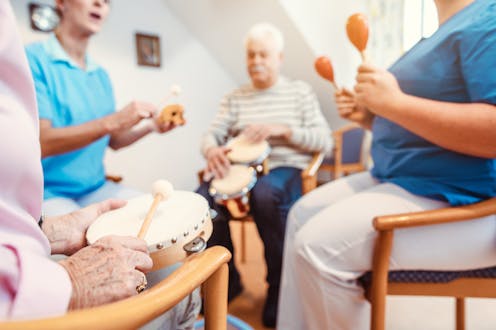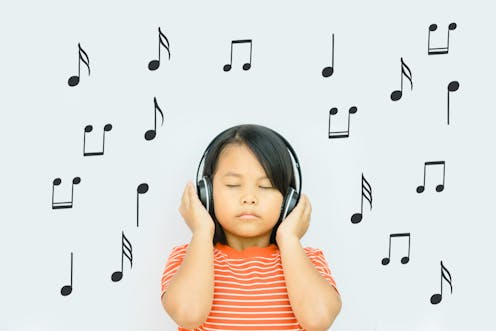Dance has long been recognized as a powerful form of self-expression and a means of connecting with others. But did you know that dance can also be a therapeutic tool for healing anxiety and depression? Mental health is a crucial aspect of overall well-being, and dance therapy offers a unique approach to addressing these issues. In this article, we will explore the definition and history of dance therapy, how it works, the science behind its effectiveness, and the many benefits it can provide for mental health. We will also delve into specific dance therapy techniques for anxiety and depression, how to find the right program for you, and real-life success stories. Finally, we will discuss the future of dance therapy and its potential to become more widely available.
What is Dance Therapy?
Dance therapy, also known as dance/movement therapy, is a form of psychotherapy that uses movement and dance as a means of promoting emotional, cognitive, physical, and social integration. It is based on the belief that the mind and body are interconnected, and that movement can be a powerful tool for self-expression and healing. Dance therapy can be practiced in individual or group settings, and it is often used in conjunction with other forms of therapy.
The history of dance therapy dates back to the early 20th century when pioneers such as Marian Chace and Rudolf Laban began exploring the therapeutic potential of movement and dance. Over the years, dance therapy has evolved into a recognized profession with its own set of principles, theories, and techniques. Today, there are various approaches to dance therapy, including the Laban/Bartenieff Movement System, Authentic Movement, and Dance/Movement Psychotherapy.
How Does Dance Therapy Work?
Dance therapy works by utilizing movement and expression to facilitate emotional release, self-awareness, and personal growth. Through guided exercises and activities, individuals are encouraged to explore their thoughts, feelings, and experiences through movement. This process allows for the release of pent-up emotions, the development of new coping skills, and the integration of mind and body.
The role of movement in dance therapy is crucial. Movement can serve as a non-verbal form of communication, allowing individuals to express themselves in ways that words alone cannot. It can also help individuals reconnect with their bodies and become more attuned to their physical sensations and needs. By engaging in purposeful movement, individuals can gain a greater sense of control over their bodies and their lives.
The therapeutic relationship is another important aspect of dance therapy. Dance therapists create a safe and supportive environment where individuals can explore their emotions and experiences without judgment. The therapist serves as a guide and facilitator, helping individuals navigate their inner landscapes and discover new insights about themselves.
The Science Behind Dance Therapy for Anxiety and Depression
Numerous research studies have demonstrated the effectiveness of dance therapy for anxiety and depression. One study published in the Journal of Clinical Psychology found that dance therapy was effective in reducing symptoms of depression in adults. Another study published in the Journal of Affective Disorders found that dance therapy was effective in reducing anxiety symptoms in individuals with generalized anxiety disorder.
The impact of dance therapy on the brain and body has also been studied. Research has shown that dance can increase levels of endorphins, serotonin, and dopamine – neurotransmitters that are associated with feelings of happiness and well-being. Dance therapy has also been found to reduce levels of cortisol – a stress hormone that is often elevated in individuals with anxiety and depression.
When compared to other forms of therapy, dance therapy offers unique benefits. Unlike talk therapy, which relies primarily on verbal communication, dance therapy incorporates movement as a means of expression. This can be particularly beneficial for individuals who struggle to articulate their emotions or who find it difficult to connect with their bodies. Additionally, dance therapy offers a social component, allowing individuals to connect with others and build supportive relationships.
The Benefits of Dance Therapy for Mental Health
Dance therapy offers a wide range of benefits for mental health. One of the most notable benefits is improved mood and emotional regulation. Dance therapy provides a safe outlet for individuals to express and release their emotions, which can lead to a greater sense of emotional well-being. It can also help individuals develop new coping skills and strategies for managing stress and difficult emotions.
Dance therapy has also been found to reduce symptoms of anxiety and depression. The rhythmic and repetitive nature of dance can have a calming effect on the nervous system, helping to reduce feelings of anxiety and promote relaxation. Additionally, dance therapy can increase levels of endorphins and other neurotransmitters that are associated with positive mood.
Another benefit of dance therapy is increased self-esteem and body awareness. Through movement, individuals can develop a greater sense of body acceptance and appreciation. They can also gain a greater understanding of how their bodies move and function, which can lead to increased confidence and self-esteem.
Furthermore, dance therapy can enhance social connections and communication skills. Group dance therapy sessions provide opportunities for individuals to connect with others in a non-verbal way, fostering a sense of belonging and community. Dance therapy can also improve communication skills by encouraging individuals to express themselves through movement and interact with others in a meaningful way.
Dance Therapy Techniques for Anxiety and Depression
There are various dance therapy techniques that can be used to address anxiety and depression. One technique is mirroring, where the therapist mirrors the movements of the individual, creating a sense of connection and validation. This technique can help individuals feel seen and understood, which can be particularly beneficial for those struggling with feelings of isolation or loneliness.
Another technique is improvisation, where individuals are encouraged to move freely without any set choreography. This technique allows for spontaneous self-expression and can help individuals tap into their emotions and inner experiences. Improvisation can be particularly helpful for individuals who struggle to express themselves verbally or who feel stuck in their thoughts and emotions.
Mindfulness and relaxation techniques can also be incorporated into dance therapy. By combining movement with mindfulness practices, individuals can cultivate a greater sense of present-moment awareness and reduce feelings of stress and anxiety. For example, individuals may be guided to focus on their breath or to pay attention to the sensations in their bodies as they move.
Music plays a crucial role in dance therapy. The therapist carefully selects music that is appropriate for the individual’s needs and goals, taking into account factors such as tempo, rhythm, and mood. Music can evoke emotions, memories, and physical sensations, enhancing the therapeutic experience and facilitating emotional release.
Finding the Right Dance Therapy Program for You
When choosing a dance therapy program, there are several factors to consider. First and foremost, it is important to find a program that is led by a qualified dance therapist. Dance therapists have specialized training and education in both dance and psychology, allowing them to provide effective and safe treatment.
It is also important to consider the specific approach or modality of the program. Different programs may have different philosophies, techniques, and goals. It is important to find a program that aligns with your needs and preferences.
Additionally, it can be helpful to consider the format of the program. Some programs offer individual sessions, while others offer group sessions. Some programs may also offer a combination of both. It is important to think about which format would be most beneficial for you based on your personal preferences and goals.
Finally, it is important to consider practical factors such as location, cost, and availability. It may be helpful to reach out to different programs and ask questions about their services, fees, and scheduling options.
Tips for Incorporating Dance into Your Daily Routine
Even if you are not able to participate in a formal dance therapy program, there are still ways to incorporate dance into your daily routine. Dance can be a powerful tool for self-care and mental health, and it can be practiced in various forms and settings.
One simple way to incorporate dance into your daily life is to create a dance playlist and have a solo dance party in your living room. Put on your favorite songs and let yourself move freely and expressively. This can be a great way to release stress, boost your mood, and connect with your body.
Another way to incorporate dance into your daily routine is to take a dance class or join a dance group. Many communities offer dance classes for people of all ages and skill levels. Taking a dance class can provide an opportunity to learn new moves, connect with others, and experience the joy of movement.
If you prefer a more solitary practice, you can also try practicing mindful movement or yoga. These practices combine movement with mindfulness, allowing you to cultivate a greater sense of presence and connection with your body.
Regular movement and exercise have been shown to have numerous benefits for mental health. Engaging in physical activity releases endorphins, reduces stress, improves sleep, and boosts overall mood. Dance is a particularly effective form of exercise because it combines physical movement with emotional expression.
Success Stories: Real-Life Examples of Dance Therapy Transformations
There are countless stories of individuals who have experienced profound transformations through dance therapy. One such story is that of Sarah, who struggled with severe anxiety and depression for many years. Through dance therapy, Sarah was able to connect with her emotions in a new way and develop healthy coping skills. She found that the rhythmic movements of dance helped to calm her nervous system and reduce her anxiety symptoms. Sarah also discovered a sense of community and support through group dance therapy sessions, which helped her feel less alone in her struggles.
Another success story is that of Michael, who had been living with chronic depression for most of his life. Through dance therapy, Michael was able to tap into his emotions and express them in a way that he had never been able to before. He found that the physicality of dance allowed him to release pent-up emotions and gain a greater sense of control over his mental health. Michael also developed a newfound sense of self-esteem and body acceptance through dance therapy, which helped to improve his overall well-being.
These stories are just a few examples of the transformative power of dance therapy. Dance therapy has the potential to help individuals heal from anxiety and depression by providing a safe and supportive space for self-expression and personal growth.
The Future of Dance Therapy: Trends and Innovations
The field of dance therapy is constantly evolving, with new trends and innovations emerging. One emerging trend is the use of technology in dance therapy. Virtual dance therapy programs are becoming more popular, allowing individuals to participate in sessions from the comfort of their own homes. Virtual reality technology is also being used to create immersive dance therapy experiences, allowing individuals to explore new movements and environments.
Another trend in dance therapy is the integration of other forms of expressive arts, such as visual art, music, and drama. By combining different art forms, individuals can engage in a multi-modal therapeutic experience that addresses various aspects of their mental health.
The potential for dance therapy to become more widely available is also an exciting development. As more research is conducted on the effectiveness of dance therapy, it is likely that it will become more recognized as a legitimate form of mental health treatment. This could lead to increased access to dance therapy services and greater acceptance within the medical community.
Embracing the Healing Power of Dance
In conclusion, dance therapy offers a unique and powerful approach to healing anxiety and depression. Through movement and expression, individuals can tap into their emotions, develop new coping skills, and gain a greater sense of self-awareness. Dance therapy has been shown to have numerous benefits for mental health, including improved mood, reduced anxiety and depression symptoms, increased self-esteem, and enhanced social connections. Whether through a formal dance therapy program or through incorporating dance into your daily routine, embracing the healing power of dance can be a transformative experience. So why not give it a try? Put on some music, let yourself move freely, and see how dance can help you heal and thrive.
Find out how Torongo Therapyplus can help you with your needs. Get in touch with us at smile@torongo.life, or call us on 02 8809 9965.































